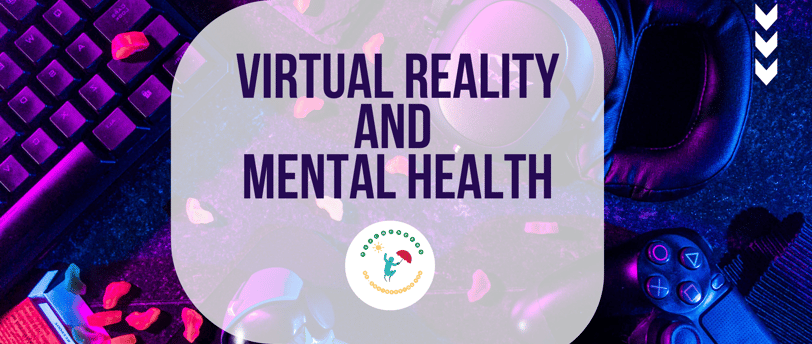Virtual Reality
Virtual Reality: Boon or Bane
MENTAL HEALTH


The potential of virtual reality to revolutionize the world is unparalleled. Virtual reality represents an extraordinary shift in how humans experience the digital world. Initially, virtual reality has been a source of entertainment all over the world. Currently, virtual reality is not just limited to entertainment as over time dynamic minds came up with the idea of taking the applications of virtual reality to the next level.
Today virtual reality has touched multiple spheres of human life. Virtual reality is successfully used in recruitment, training, pain management, training medical students, treatment of post-traumatic stress disorder, training on social cognition to manage autism, managing and treating anxiety disorders, therapy for paraplegics, as well as for leisure.
Virtual reality is a boon when it comes to mental health in contradiction to which experts earlier were concerned that it would damage our brains.
PAIN MANAGEMENT
Today virtual reality is used in pain management, the patients are asked to wear VR headsets. The technology is used in diverting the patient’s brain and mystifying the pain pathway by drawing their minds from the painful experience. Orthodontics are also using VR technology to soothe patients when extracting their teeth or conducting root canals and other dental surgeries.
POST-TRAUMATIC STRESS DISORDER
Trauma and traumatic experiences are common to a large population around the world. Virtual reality has been a helping hand for mental health experts when dealing with clients undergoing post-traumatic stress disorder. Virtual reality can assist in treating the fears in patients with PTSD by helping mental health experts replay what they went through. As a result, reliving the experiences can help the mental health experts to gain insight into the patient’s condition and come up with ways to help them cope better.
ANXIETY
Anxiety creates a sense of fright in patients. Some describe their feelings as if they have lost the ground beneath their feet. Some have chest pain or feel like they must escape to a safer location or undergo physical reactions like psychogenic hiccups or vomiting.
A common symptom of anxiety is breathlessness. This symptom and many other variables that the patient deals with can be monitored and controlled using virtual reality.
The medical team can use functional apps fused with the VR technology to monitor the patient’s breathing patterns and suggest appropriate scenarios for the patient to take up. If needed the medical team can also quickly add anxiety medication thus saving the time-lapse between traditional medicinal responses.
AUTISM
The number of patients suffering from autism spectrum disorder, a developmental disorder, has been on the rise. Children with autism have impaired reasoning, interaction, and social skills. Virtual reality technology can help in managing the condition by enhancing and improving the patients’ brain activity and imaging.
This can be possible only when the patients and parents are introduced to different social scenarios and then by using medical and psychological training and teaching both guardian and patient about the best usage behavior in each situation. This gives each the chance to practice prior to the occasion.
PHOBIA
Virtual reality has been successful to help mental health experts in dealing with patients with a particular phobia or irrational fear. Exposure therapy is a well-known technique practiced for helping people to overcome any kind of phobia. In-vitro exposure therapy is both cost-effective and safe wherein the patient is exposed to the object of fear through virtual reality.
This application of VR to test and tweak the brain is still in a blooming phase. And with excitement around VR entertainment and gaming fizzling from its 2017 peak, it’s quite reasonable to question whether VR therapy is the real deal or just another topic for debate. The evidence so far is strongly in favor, though, with recent research suggesting psyche-focused VR will live up to the speculation.
